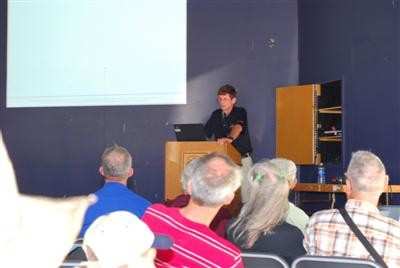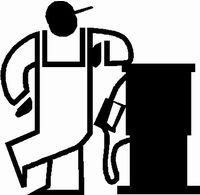Lycoming Updates The Fight Against 100LL By
Environmentalists
By Chris Batcheller
“The clock is ticking” exclaimed Lycoming’s
Randy Jenson as he opened the forum on Aviation Fuels. An
environmental activist group called the “Friends of the
Earth” has petitioned the EPA to ban all leaded fuels in
aviation. He went on to say “The status quo has
changed”. Lycoming fully expects that the EPA will rule
against 100LL fuel, forcing the industry to find an alternative in
the next 5 to 7 years. They believe that this ruling will
come because of global economic, political and regulatory
pressure.

Randy Jenson
The country consumes 9.8 million
barrels of mogas (car gas) per day and 4.5 million barrels of road
diesel per day. Of the aviation fuels, Jet fuel is consumed the
most at 1.8 million barrels per day due to commercial use. In
contrast, a mere 20,000 barrels of 100LL is consumed per day. Randy
noted that Avgas is considered a “specialty chemical”
and that it stopped being a high volume fuel in the
1960’s.
Randy Jenson went on to note that high octane mogas is not a
direct suitable replacement for leaded (TEL) fuels. There are
several obstacles to using a mogas or mogas based fuel industry
wide as a replacement for 100LL. While mogas is a high volume
fuel and competitively priced, it has lower octane, higher vapor
pressures, and is blended many different ways. In addition the
aviation community has no voice in setting standards for the
fuel.
Another obstacle is that mogas is currently blended with Ethenol
in the United States, which is not compatible with aviation fuel
systems. It is possible to order mogas without ethanol, but
it must be purchased in a large enough quantity to make it
economically viable.
 The first obstacle is the octane,
which is sufficient for about 60% of the fleet, but it is not
enough for the high performance aircraft. These high performance
aircraft consume about 60% of the 100LL that is produced. Then,
there is standardization. Aviation fuels are standardized to ensure
consistency of important fuel properties all over the world. There
is no standard for mogas, and fuels are blended locally based on
regional needs.
The first obstacle is the octane,
which is sufficient for about 60% of the fleet, but it is not
enough for the high performance aircraft. These high performance
aircraft consume about 60% of the 100LL that is produced. Then,
there is standardization. Aviation fuels are standardized to ensure
consistency of important fuel properties all over the world. There
is no standard for mogas, and fuels are blended locally based on
regional needs.
As diesel engines continue to gain popularity, Randy also noted
that there are fuel-related issues to consider. Road diesel is
generally not favorable for aviation use because of the low waxing
point. This is the temperature that the full starts to transition
from a liquid into a solid.
While Jet A is an obvious choice for the aviation diesel engine,
there are some issues with its use. The largest of those is
that cetane is not regulated in the current Jet-A / JP-8
specifications. Cetane controls the ignition timing in a Diesel
engine. ExxonMobile recently sent a letter to remind customers that
cetane is not tracked and that cetain numbers can vary greatly.
They also noted that ExxonMobile can not be responsible if
customers use Jet fuel in their Diesel airplanes.
"There is no magic bullet,” Randy said. He noted that the
industry's best option for a 100LL replacement is development of a
synthetic fuel. For Jet Fuel, the industry needs to determine a
minimum cetain number. One way to raise cetane is to inject an
additive into the fuel in the vehicle. Either the industry needs to
manufacture Jet fuel to a revised standard with a minimum cetane,
or Diesel equipped airplanes will need to carry an extra tank for
the additive.
It is clear that Lycoming expects the EPA to require that 100LL be
phased out, probably in the next 5 to 7 years. In this time frame
the industry must find a suitable replacement for legacy engines,
since newer engines can be designed to run on lower octane fuels.
Some additional work also needs to be considered in using Jet fuel
in Diesel Engines.
 ANN's Daily Aero-Linx (04.13.24)
ANN's Daily Aero-Linx (04.13.24) ANN's Daily Aero-Term (04.13.24): Beyond Visual Line Of Sight (BVLOS)
ANN's Daily Aero-Term (04.13.24): Beyond Visual Line Of Sight (BVLOS) Airborne 04.09.24: SnF24!, Piper-DeltaHawk!, Fisher Update, Junkers
Airborne 04.09.24: SnF24!, Piper-DeltaHawk!, Fisher Update, Junkers Aero-News: Quote of the Day (04.14.24)
Aero-News: Quote of the Day (04.14.24) ANN's Daily Aero-Term (04.14.24): Maximum Authorized Altitude
ANN's Daily Aero-Term (04.14.24): Maximum Authorized Altitude




